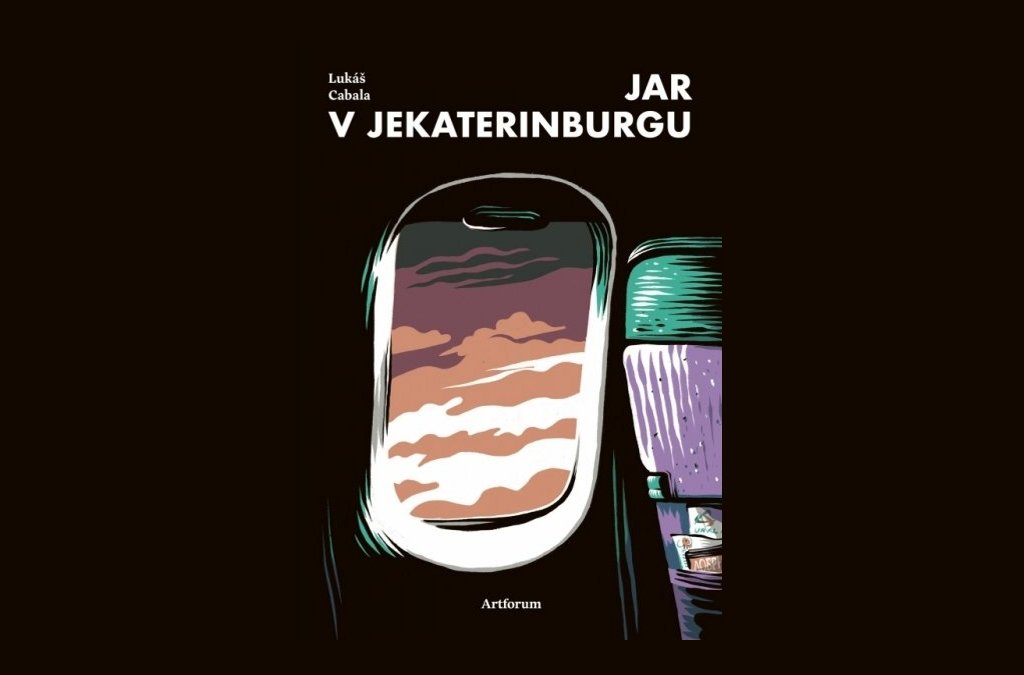
Lukáš Cabala: Jar v Jekaterinburgu / Spring in Yekaterinburg
Illustrations: Jindřich Janíček
Published by Artforum, Bratislava, 2021
Lukáš Cabala entered the literary scene in 2020 with his debut Satori v Trenčíne / Satori in Trenčín, illustrated by Anna Cima. The book made the Anasoft Litera 2021 top ten and won the literary monthly Knižná revue Readers' Prize in the Debut of the Year 2020 category.
His second book, Spring in Yekaterinburg came out in 2021 and once again, it is accompanied by captivating illustrations, this time by Jindřich Janíček. The drawings underline the atmosphere and create an organic whole with the story line.
Both Cabala’s works are, however, connected with much more than just precise graphic design. For example, the main character in this story who finds himself in the fictional city of Tarakanovsk somewhere in Siberia, is also called Vincent. He responds to an offer for writers to spend some time at the Belyi Krot research station and write about the ongoing research, though the assignment is quite vague and no one seems to care whether Vincent even fulfils it.
The White Mole is an underground station excavated in the permafrost, which is being explored by an international team of scientists. In recent years, the "permafrost" has begun to thaw and give up its treasures, organisms preserved for tens of thousands of years, but it is also releasing deposits of the greenhouse gas methane and undermining the structure of buildings. While scientists are sounding the alarm, local (and non-local) residents are in denial; they do not perceive the impending disaster. "Only now and then, when someone's wall bursts and they have enough education to make the connection to warming and subsiding soil. But even that kind of person will be mocked at the local office." (p. 18)
Gradually, Vincent gets to know the station's crew and even develops friendly relationships with some of the members, such as the dedicated professor William Butler, who goes temporarily mad when the body of a boy, some twenty thousand years old, is discovered in the permafrost and in it, he recognises himself as a young boy. Later, Vincent sees him covering the ice and snow in the city with tarps to prevent it from melting.
He also befriends Yelena who reminds him of a polar fox and who looks after the art gallery at the station. Her companion is a toothy dog and a prehistoric man. Yelena is a foundling, once taken in by the mayor of Tarakanovsk, Sergei Gerasimov, who hides strange things in the taiga behind his dacha and clearly has his own intentions with the finds from the station.
Outside the station, Vincent begins to see Akbara, a Slovak girl, who has come to study traditional textile techniques. She is weaving a tapestry inspired by the mold in the bathroom of a rented apartment and forever eluding Vincent.
We are moving underground or in a freezing city on the edge of reality and fantasy the whole time. There is a chill and mystery in the air, one has the impression of constant twilight or forest darkness while reading – after all, even during the screening of Nikita Mikhalkov's film Burnt by the Sun, the power goes out in the whole city.
Aside from the fantasy-infused atmosphere, another link with the first book is the references to literary works, this time primarily by Russian authors: the title already reminds us of Vladimir Nabokov's Spring in the Fialta, we meet Dostoyevsky's The Double and A Gentle Creature, we stop at the Strugatsky brothers' Roadside Picnic, we sit on The Twelve Chairs of Ilf and Petrov... And this is what makes both of Cabala's books special: we can read them as an original story that unfolds from the first page to the last, but also as a jigsaw puzzle of dozens of other stories that will reveal themselves to us if we correctly identify the clue and know what lies behind it, or if we choose to uncover it.
But perhaps everything is different after all, and at the end of the book we are treated to excerpts from newspaper articles about permafrost and research in the Siberian region, from which we learn that even the author's most bizarre ideas have a basis in reality. He just told himself that he had to "take reality into his own hands..." (p. 117). However, the conclusion or completion of individual plot lines are up to the reader, who may thus be left with a feeling of incompleteness of sorts.
Lucia Halová (1979)
Halová translates mainly fiction and film subtitles from English and Portuguese, and also edits book translations. She works in the editorial office of the magazine Verzia. From English she has translated, among other titles, Stephenie Meyer's Twilight series, Frank Tallis's The Act of Living and Bernardine Evaristo's Girl, Woman, Other, and from Portuguese Fernando Pessoa's The Book of Disquiet.